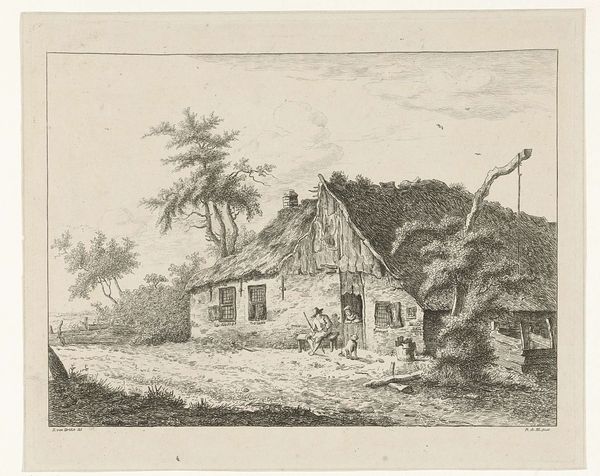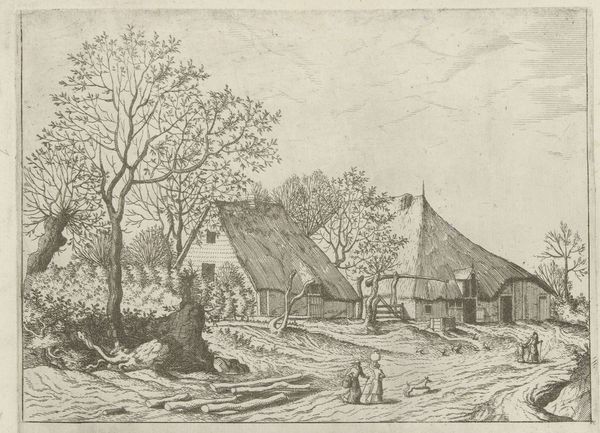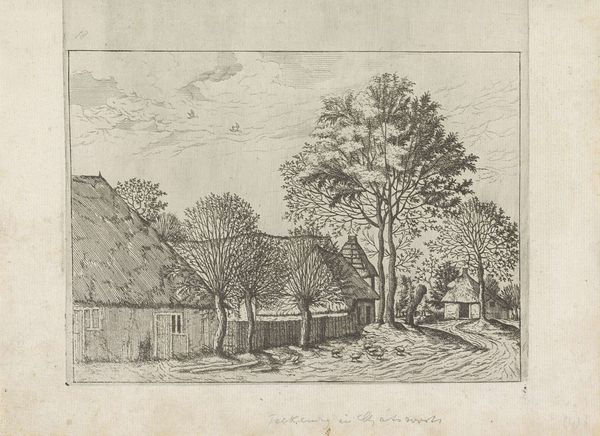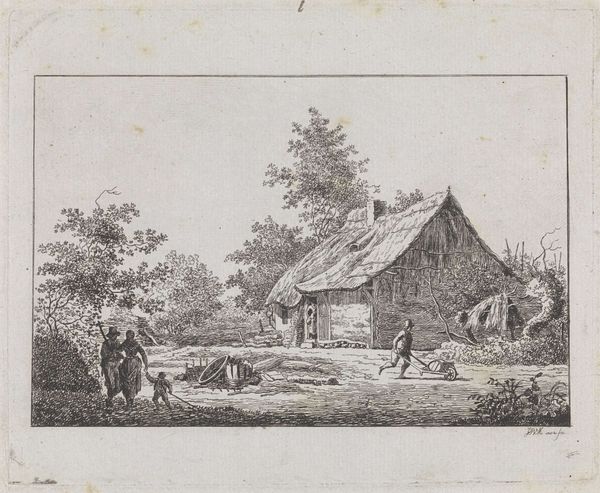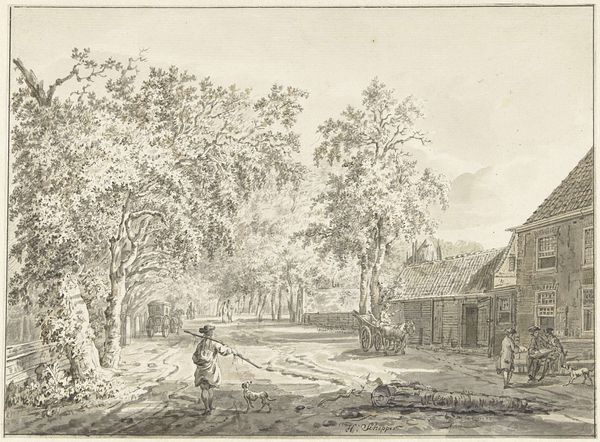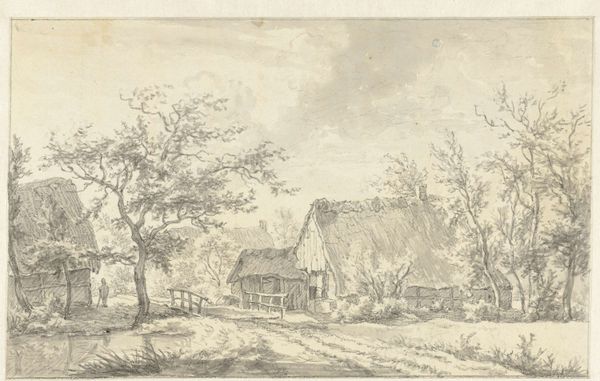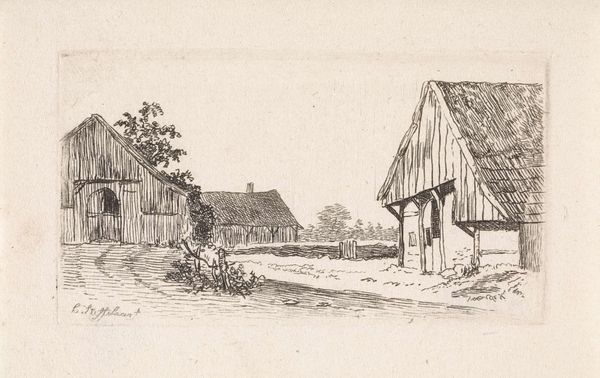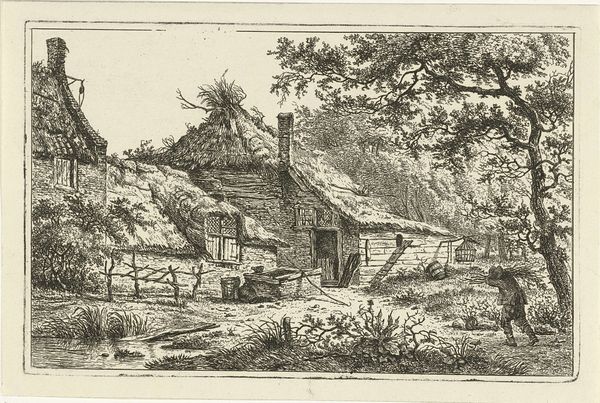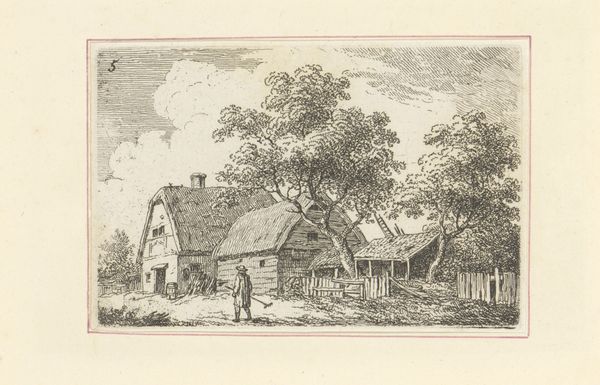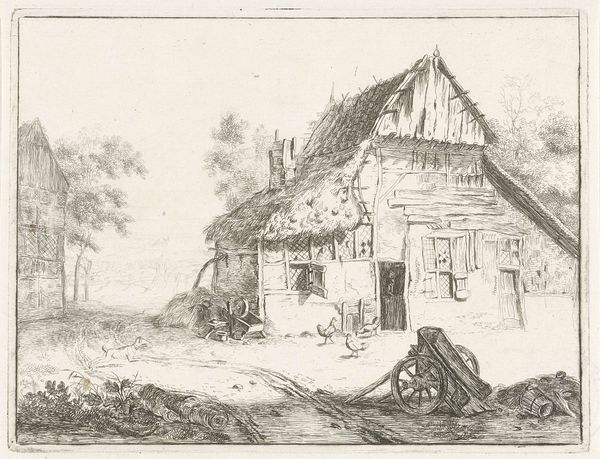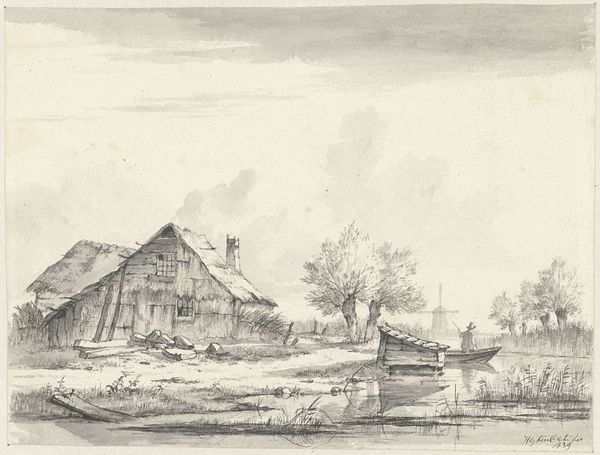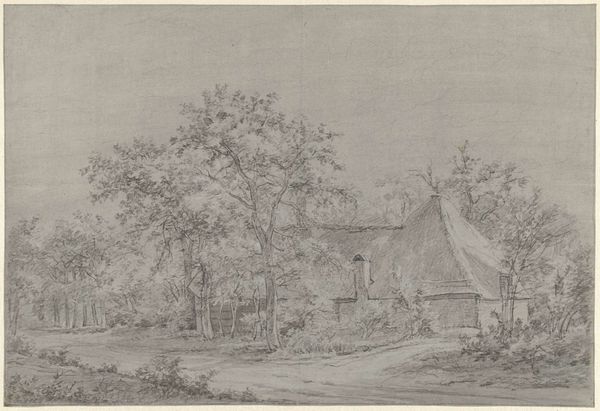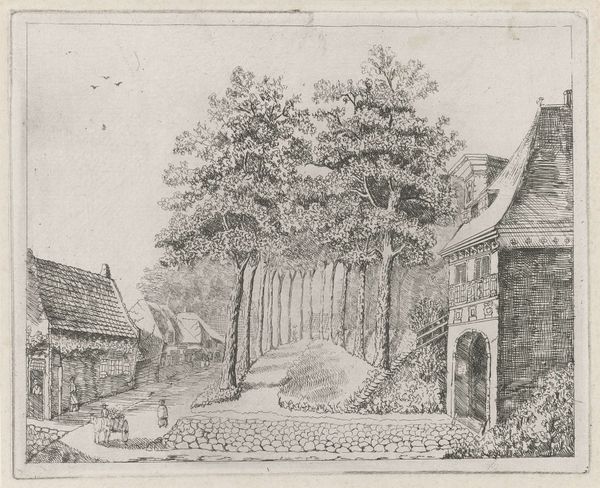
drawing, etching, pencil
#
architectural sketch
#
drawing
#
aged paper
#
light pencil work
#
dutch-golden-age
#
pen sketch
#
etching
#
pencil sketch
#
old engraving style
#
sketch book
#
landscape
#
personal sketchbook
#
pen-ink sketch
#
pencil
#
pen work
#
realism
Dimensions: height 296 mm, width 370 mm
Copyright: Rijks Museum: Open Domain
Curator: This is Hendrik Gerrit ten Cate's "Boerderijen te Beek, boven Nijmegen," or "Farmhouses in Beek, near Nijmegen," from 1829, executed in pencil and etching. Editor: My immediate impression is the light. See how he captures the subtle greys and how it defines the architecture! The aged paper complements that delicate light pencil work so well. Curator: Absolutely. The structure relies on careful composition—the way the farmhouses are positioned, framing the landscape, provides an almost mathematical structure with an organic flow. There’s an almost Dutch Golden Age formality about it, wouldn't you agree? Editor: In contrast, what I find interesting is the direct, unembellished portrayal of the farmhouses. Ten Cate’s etching here reveals the textures and irregularities in each structure and speaks of manual labor and everyday rural life, offering an unfiltered look at their means of existence. I notice details that highlight that materiality—the aged, worn textures. Curator: Observe how the interplay between shadow and light creates a spatial complexity, especially regarding those details. The linear perspective, anchoring on that little family adds depth and order to the rural scene, achieving an intimate view through this particular perspective. Editor: Yes, and consider how this etching may have been produced and disseminated. Was it part of a broader social movement of documenting rural life or intended for mass consumption? Who exactly were the intended audience for these kinds of depictions, beyond those wealthy enough to have these works? That context interests me. Curator: That’s insightful! The rendering of such intimate structural detail, even, may serve as an invitation for deeper social reflection—almost an encoded meaning waiting for decoding in each carefully chosen detail. Editor: It underscores the human presence and activity inherent in the landscape. The subtle imperfections speak to me as to how these were rendered as reproducible goods in their era and, considering the pen work, how each of them possesses an inherent handmade aesthetic of their time and conditions. Curator: Indeed. The semiotics here provide further opportunities for interpretation—each element carries representational weight, each leading to endless interpretative threads. Editor: From a Materialist perspective, thinking through the aged pencil technique in this light work, the sketch allows us to meditate and discuss about both representation, reproduction and experience of historical materiality of labor in the landscape.. Curator: This exploration allows a further reflection upon these kinds of aesthetic constructions! Editor: Definitely a glimpse beyond the pure aesthetic and formal beauty to discover our deep, material connections within landscape as part of social and visual history.
Comments
No comments
Be the first to comment and join the conversation on the ultimate creative platform.
